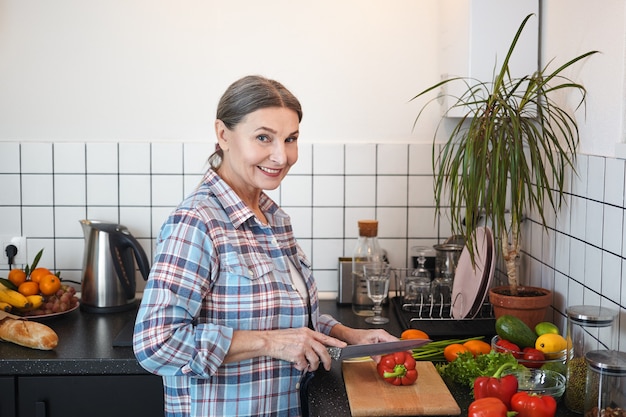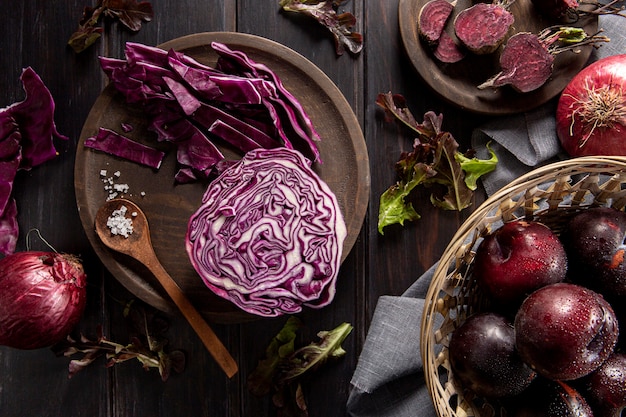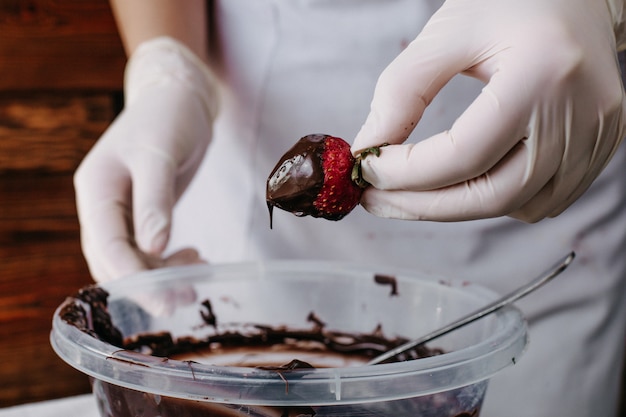Let's talk beets, folks. I know, some of you might be thinking "Ugh, beets?" But trust me, these vibrant root vegetables are about to become your new best friend. Roasted to perfection, they offer a unique and delightful flavor experience – tender, sweet, with a hint of smoky earthiness that’s simply irresistible. Forget those limp, boiled beets from the salad bar; we're going for a whole new level of beet bliss here.
Over the years, I've perfected my beet roasting technique, and I'm thrilled to share it with you. We'll dive into everything from selecting the perfect beets to achieving that heavenly roasted texture, and we'll even explore some creative ways to use them in your kitchen. So, grab your apron, let's preheat the oven, and get ready to unleash your inner beet master!
(Part 1) The Beet Basics: Choosing Your Stars

Picking the Right Beets
It all starts with the beets themselves. When you’re at the market, look for beets that are firm, smooth, and free from any blemishes. Think of them like tiny, earth-toned gemstones. The size doesn't matter too much, but I tend to gravitate towards medium-sized beets. They seem to cook more evenly and give you a good amount of beet goodness for your efforts.
Here’s a little insider tip: the color of the beet can actually give you a clue about its flavor. Deep, vibrant hues – think rich red or even purple – generally mean a sweeter beet. But don’t worry, those paler pink ones are delicious too, just maybe a tad less sweet. It’s all about personal preference, really.
Prepping for Perfection
Once you've found your perfect beets, it's time to prep them. Start by trimming off the leafy tops, leaving about an inch of stem. Now, this is where I differ from some recipes – I usually leave the skin on. That tough, earthy skin acts like a protective shield during roasting and actually contributes a little bit of texture to the finished beet. But, if you prefer a smoother texture, feel free to peel them beforehand. Just be sure to wash them thoroughly before you get started.
Next, you need to decide how you want to roast them: whole or chopped. I often chop them into wedges or even quarters, depending on their size. This allows them to cook faster and gives you a lot of surface area for those beautiful caramelized edges.
(Part 2) The Art of Roasting: Achieving Beet Bliss

Getting the Oven Ready
Now, let's talk oven. Preheat your trusty oven to 400 degrees Fahrenheit (200 degrees Celsius). This temperature is ideal for tenderizing those beets without burning them to a crisp. Speaking of burning, don’t forget to line your baking sheet with parchment paper. It makes cleanup a breeze – you’ll be thanking me later.
Seasoning and Roasting
Time for the fun part: seasoning! This is your chance to get creative and personalize your beet experience. The simplest approach is to toss them with a drizzle of olive oil, salt, and pepper. But if you’re feeling adventurous, try adding some herbs and spices. I love a little garlic powder and fresh rosemary, but feel free to experiment with cumin, paprika, or even a touch of cinnamon. The possibilities are endless!
Once your beets are seasoned, spread them out in a single layer on the baking sheet. Make sure they’re not crowded – we want them to roast evenly, not steam. Slide that baking sheet into the oven and let those beets bake for 45 to 60 minutes, or until they're fork-tender.
To check for doneness, simply pierce a beet with a fork. If it slides in easily, you're good to go. If it still feels a bit resistant, give them a few more minutes in the oven. Just remember to keep an eye on them so they don't overcook.
(Part 3) The Cool Down: Releasing the Beet Goodness

Cooling and Peeling
Once your beets are out of the oven, let them cool slightly. This allows them to steam a bit and makes them much easier to peel. You can cool them at room temperature, or if you’re feeling impatient like me, an ice bath works wonders. Just transfer them to a bowl of ice water and let them chill for about 10 minutes. This will speed up the process and make those skins a breeze to remove.
Now, if you roasted your beets with their skins on, it’s time to peel them. The skin should slip off easily, especially after a cool down. But if you’re feeling lazy (who isn’t?), you can simply rub the skins off with a paper towel. Just try not to be too rough, as you want to preserve those beautiful roasted beets.
(Part 4) Beyond the Basic Roast: Boosting Your Beet Game
Creative roasting techniques
Let's take things up a notch and explore some exciting variations on the basic roasting technique. These methods can add depth and complexity to your beet flavor profile.
Foil-Wrapped Roasting
Roasting beets in foil creates a more intense, sweeter flavor. Just wrap each beet individually in foil, adding a drizzle of olive oil and a sprinkle of your favorite seasonings. Then bake them in the oven for about an hour, or until tender. This method essentially steams the beets in their own juices, concentrating the flavor.
cast iron pan Roasting
Roasting beets in a cast iron pan adds a touch of smoky caramelization that’s absolutely heavenly. Heat the pan over medium heat, then add a drizzle of olive oil and your beets. Roast them for about 20 minutes, flipping them occasionally, until they're tender. The cast iron pan retains heat beautifully, creating those perfect charred edges.
(Part 5) The Beet Transformation: Unleashing Culinary Magic
Alright, we've got our perfectly roasted beets. Now it’s time to get creative! Let’s explore some of the exciting ways to incorporate these beauties into your culinary repertoire.
Salads
Roasted beets are a natural addition to any salad. They bring a beautiful pop of color, a touch of sweetness, and that earthy depth of flavor. Simply chop them into cubes or slices and toss them into your favorite salad. I love combining them with greens, goat cheese, walnuts, and a tangy vinaigrette dressing. But don't be afraid to experiment and create your own delicious combinations.
Soups and Stews
Roasted beets are also a fantastic ingredient for soups and stews. They add a rich, vibrant hue and a unique depth of flavor that elevates any dish. You can simply add them to your favorite soup recipe or use them as the base for a beet soup. Blend some roasted beets with broth and seasonings for a delicious, nutritious soup that’s bursting with flavor.
Spreads and Dips
Roasted beets can also be transformed into a delicious spread or dip. Simply puree them with some cream cheese, tahini, or even a little bit of avocado. The result is a healthy and flavorful dip that’s perfect for crackers, crudités, or even as a sandwich filling. It’s a simple but impressive appetizer that will impress your guests.
Main Dishes
Don't underestimate the power of beets in main dishes. They're a perfect accompaniment for lamb, chicken, or fish. They also add a fantastic depth of flavor and color to vegetarian dishes. You can roast them alongside your protein or add them to your favorite stir-fries or pasta dishes.
(Part 6) Beet Storage Tips: Keeping Your Beets Fresh
Now, let's talk about preserving the freshness of those precious roasted beets. If you're not planning on using them immediately, store them in an airtight container in the refrigerator. They'll stay fresh for up to 3 days.
You can also freeze roasted beets. Just chop them into cubes or slices and spread them out on a baking sheet. Freeze them for about an hour, then transfer them to a freezer-safe bag. They'll stay good for up to 3 months, ready to be thawed and used in any recipe that calls for those delicious beet flavors.
(Part 7) The World of Beet Variations: A Rainbow of Flavor
golden beets
Let's talk golden beets! These beauties are slightly sweeter than their red counterparts. They roast beautifully and their color adds a stunning touch to salads and dishes. You can use them in the same way as red beets, but their mellow, golden hue brings a unique visual appeal.
Rainbow Beets
And then there are the rainbow beets! These vibrant beets come in a stunning array of colors, from deep red to bright yellow, purple, and even striped. They add a beautiful pop of color to any dish, and each color offers a slightly different flavor profile. It's like a beet rainbow in your kitchen!
(Part 8) Beet Inspiration: Recipes to Ignite Your Creativity
Feeling inspired to get cooking? Here are a few of my favorite beet recipes to get you started.
- Roasted Beet and Goat Cheese Salad
- Creamy Beet Soup
- Roasted Beet and Walnut Hummus
- grilled salmon with Roasted Beets and Balsamic Glaze
- Beet and Carrot Falafel with Tahini Sauce
These recipes, along with many others, can be found online. But don’t be afraid to experiment and create your own unique beet dishes. The possibilities are endless!
(Part 9) The beet benefits: A nutritional powerhouse
Let's not forget about the health benefits of beets. They're packed with essential vitamins, minerals, and antioxidants. They're a great source of folate, potassium, and fiber. They also contain nitrates, which have been linked to improved blood flow and heart health. So, not only are beets delicious, they’re also incredibly good for you. What's not to love?
FAQs
1. How long do beets need to roast?
The roasting time for beets depends on their size and whether you're roasting them whole or chopped. Generally, whole beets will take around 45-60 minutes at 400 degrees Fahrenheit (200 degrees Celsius), while chopped beets will take around 30-40 minutes. However, it's always best to check for doneness by piercing a beet with a fork. If it slides in easily, they're ready.
2. How can I tell if my beets are overcooked?
Overcooked beets will be mushy and lose their vibrant color. If you're worried about overcooking them, start by checking them at the shorter end of the roasting time and continue to check every few minutes until they're fork-tender.
3. Can I use leftover roasted beets in other dishes?
Absolutely! Leftover roasted beets are fantastic in a variety of dishes. You can use them in salads, soups, dips, or even as a topping for pizzas or tacos. The possibilities are endless!
4. Do roasted beets taste better with their skins on or off?
It's a matter of personal preference. Some people prefer the earthy flavour and texture of the skin, while others find it a bit too tough. You can roast them with or without the skin, depending on your preference.
5. What is the best way to store roasted beets?
To keep your roasted beets fresh, store them in an airtight container in the refrigerator. They'll last for up to 3 days. You can also freeze roasted beets for later use. Just chop them into cubes or slices and spread them out on a baking sheet. Freeze them for about an hour, then transfer them to a freezer-safe bag. They'll stay good for up to 3 months.
I hope this comprehensive guide has inspired you to embrace the world of roasted beets. These versatile vegetables are waiting to be discovered, and I can't wait to see the delicious dishes you create!
Everyone is watching

Corn on the Cob: The Ultimate Guide to Perfectly Cooked Ears
Healthy MealsAh, corn on the cob. Just the name evokes images of sunny days, barbecues, and that sweet, juicy flavour that ...

Perfect Pork Roast Oven Cooking Time: A Guide to Delicious Results
Healthy MealsThere's something truly satisfying about a perfectly roasted pork. The aroma alone is enough to make your mout...

Scallops: The Ultimate Guide to Perfect Cooking
Healthy MealsAh, scallops. Those delicate, sweet, and utterly delicious morsels of the sea. They hold a special place in my...

Spaghetti Squash: The Ultimate Guide to Cooking and Serving
Healthy MealsRemember that time you saw spaghetti squash at the supermarket, looking all bumpy and strange, and thought, "W...

Ham Cooking Time: How Long to Bake, Smoke, or Boil a Delicious Ham
Healthy MealsAh, ham. It's a classic, isn't it? A real crowd-pleaser, especially around holidays. And when done right, it'...
